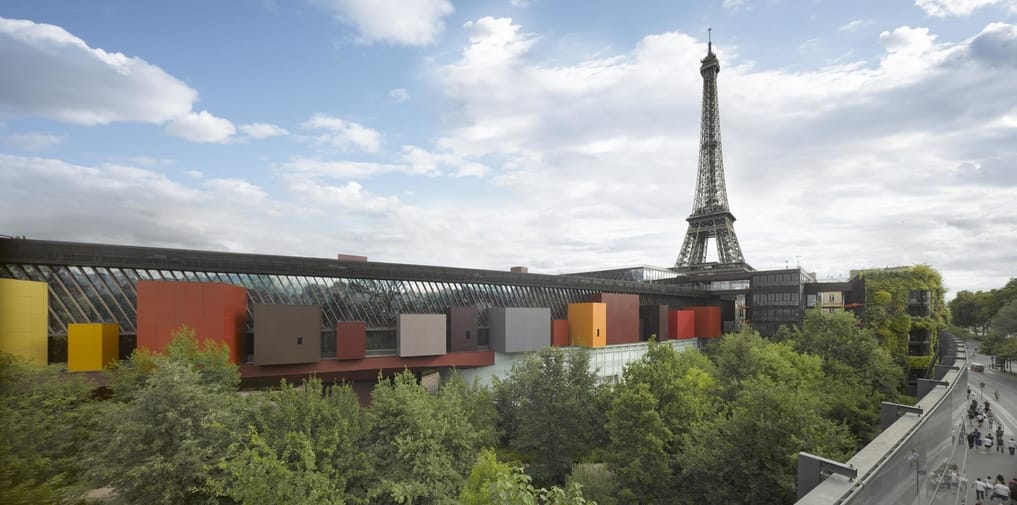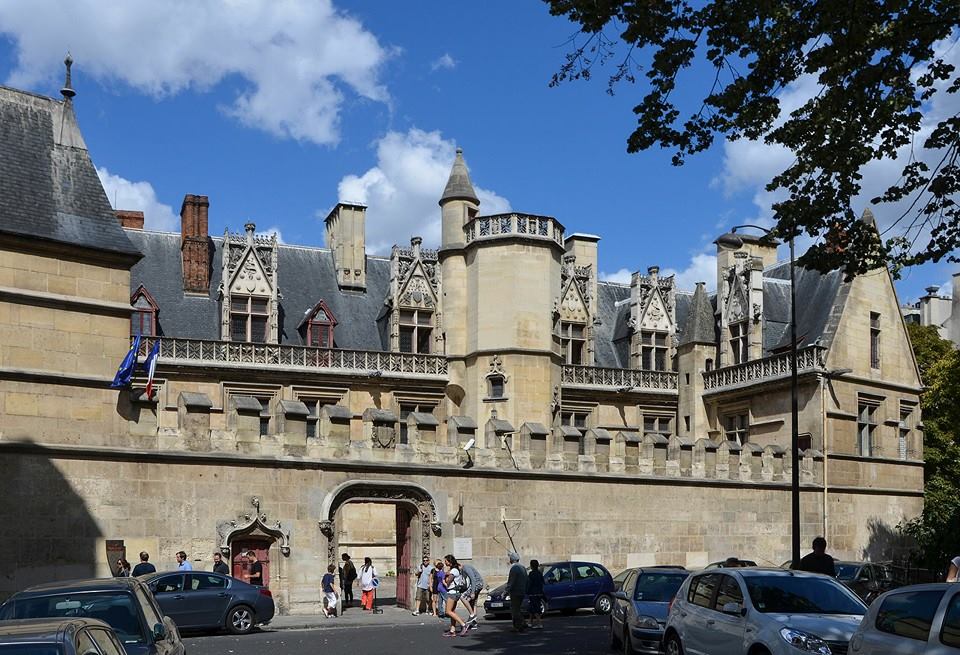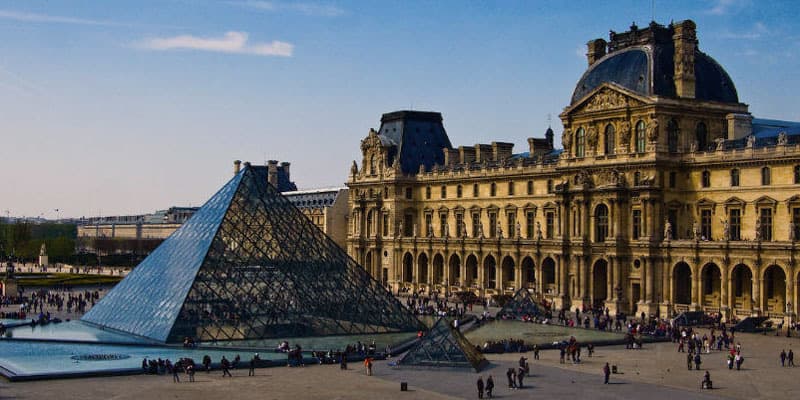Best Museums in Paris
One of the draws that Paris has as a beautiful city is its vast array of museums. Scattered across, this beautiful piece of art and history lends credence to Paris’ deep cultural and aesthetical dispositions. In fact, the French capital has long been a center for art and artists from all over the world. It perhaps comes as no surprise that the city is home to more than a handful of incredible museums.
The famous collections at the Louvre attract close to 10 million visitors yearly, thanks to the adorable “Mona Lisa”, “Venus de Milo”, and the “Winged Victory”. While the larger museums are more famous, the smaller ones are equally worth your time.
Many of Paris museums allow you to buy tickets online in advance. Though you will not be required to choose an entry time, picking this option will afford you the chance to beat the crowds. You do have the chance to spend less time queuing as well as you spend more time checking the exhibits.
Here are Some of The Best Museums You Should Visit in Paris:
The Louvre

This is the jewel of museums in France. The Louvre is the world’s largest and the most visited museum, with more than 10 million visitors just in 2019. The imposing art museum has a vast multi-level maze of galleries, passageways, staircases, and escalators. It is famous for the artistic ingenuities it houses, and it is quite challenging to pinpoint the most integral part of the museum.
This magnificent masterpiece has witnessed modifications throughout its existence. Even today, you will see recent additions and changes like the Islamic Arts department and the franchising of the museum’s ‘bran’ through new outposts in Lens and Abu Dhabi. The Louvre bears testament to the cultural essence of French life.
There are about 35,000 artworks and artifacts on display, divided into 8 sections and housed in 3 wings like Denon, Sully, and Richelieu. Under the entry hall of the glass pyramid, each wing has its own entrance, but you can pass from one to the other. Treasures from the Egyptians, Greeks, Etruscans, and Romans each have their own galleries in the Denon and Sully wings. Middle Eastern and Islamic art also have their galleries in these wings. European arts from the Middle Ages and Napoleon III’s lush apartments are at Richelieu’s first floor.
The central attraction here is the painting and sculpture. Two glass-roofed sculpture courts have the famous Marly horses on the ground floor of Richelieu, with French sculpture below the Italian Renaissance pieces in the Denon wing. In addition, the Grande Galerie and Salle de la Joconde (where you’ll find the Mona Lisa), like a small Uffizi, run the length of Denon’s first floor with French Romantic painting with it. Dutch and French paintings occupy the second floor of Richelieu and Sully. Jean-Pierre Wilmotte’s minimalist showrooms in the Denon wing were created as a taster for the Musée du Quai Branly, with artworks from different parts of the world.
Mitterrand’s Grand Louvre project added significant changes to the museum as two folds were worked to it. Located in the Visconti wing, the two-story gallery lies underneath the courtyard, beneath a floating golden roof built from 2,350 triangles. While inside, you can enjoy the sight of some 3,000 artworks, including gold treasures from Syria, ivories, miniatures, ottoman ceramics, and textiles.
Entering the museum is simple. Advance tickets are valid for any day, are available from the Louvre website or branches of Fnac and Virgin Megastore. Close by, the Virgin in the Carrousel du Louvre sells tickets. Also, note that your ticket is valid all day and you can leave and re-enter the museum as you want.
The Centre Pompidou

The National Museum of Modern Art (MNAM) is one of the must-see museums in the city of Paris. The prestigious contemporary art museum is located at the Centre Georges Pompidou. It houses one of the world’s most essential collections of modern art.
Having over 100,000 works from important 20th-century painters, sculptors, and architects like Picasso, Braque, Matisse, Miro, Magritte, Warhol, Saint-Phalle, Pollock, and many others; the museum’s primary collection is regularly furnished.
MNAM is a gorgeous masterpiece that has stood out among other museums in certain aspects. Its primary colors, exposed pipes, and air ducts make the Centre Pompidou one of the famous sights in Paris. When the center opened in 1977, its success surprised the nation. After a two-year renovation, the center reopened in 2000 with an expanded museum, renewed exhibition areas, vista-rich Georges restaurant, and the purpose of getting back to the interdisciplinary blend of before. Alongside the library, the entrance is free. However, you will have to pay to go to the escalators.
In Europe, the Center Pompidou has the most extensive collection of modern art and is closely followed only in its breadth and quality by MoMA in New York. Check out the works on its vaults (50,000-art pieces by 5,000 artists) on the website, as only a fraction- about 600 works- can be seen anytime.
As regards the main gathering, get tickets on the ground floor and take the escalators to level for post-1960s art. Level five spans 1905 to 1906. There are about 4 temporary exhibition spaces, each of these two levels. On level five also is the historical section that takes a chronological sweep through the history of modern art, through various art movements. You have the chance to see the masterful ensembles of Matisse’s career on canvas and in bronze, Picasso inventions, and the development of cubic Orphism by Sonia and Robert Delaunay.
Also on the masterful ensembles are Braque, Duchamp, Mondrian, Malevich, Kandinsky, Dali, Miro, Calder, Magritte, Rothko, Pollock, Ernst, and Giacometti. The photography collection also has a cracking roll call with the like of Brassaï, Kertész, Man Ray, Cartier-Bresson, and Doisneau.
For level four, there is post-’60s art. Its thematic rooms focus on the career of one artist or concentrate on movements. There is also the video art and installations by the Mathieu Mercier and Dominique Gonzalez-Foerster.
Thematic pathways through the collections are often changed up. This means that if you visit on multiple occasions, you are not likely to feel it is a repeat each time. The museum’s temporary exhibits are oftentimes worth the ticket price.
Musée d’Orsay

This is a gorgeous impressionist and expressionist museum. Housed in an old train station n the banks of the Seine, the Musée d’Orsay is located just across from the Louvre, and effectively bridge the gap between pre-modern and modern artistic movements and traditions. Many impressionist and expressionist masterpieces are kept here, from Claude Monet, Edouard Manet, Vincent Van Gogh, Edgar Degas, Paul Gaugin, and others, including less-popular but important modern artists.
As a quick history, Victor Laloux’s 1900 former train station was set for demolition and its giant clocks to erect an ultra-modern lavish hotel on the banks of the Seine. Luckily, its history and significance prevailed, and the newly redesigned Musée d’Orsay was revealed on December 1, 1986.
The museum reopened its two most important chambers in October 2011, after years of building operations. In the museum, rooms are dedicated to artists like Courbet, Van Gogh, and art nouveau. Even the elegant coffee shop tucked behind the clock (designed by the Campana brothers) is submarine themed, in tribute to Jules Verne’s Nautilus, and has been treated to an invigorating lick of paint.
The museum begins where the Louvre finishes off (around 1848) and continue where the Center Pompidou’s begins (1914). So the sixty years of art history, from realism to the Pont-Aven school, from Impressionism to pointillism, which draws over 3 million visitors a year as it occupies 35,000 m2.
The attractive spots of this glass and metal large gem are the Courbet’s ‘L’Origine du monde’ and ‘Un enterrement à Ornans,’ as well as Millet’s ‘Glaneuses’ and Corot’s landscapes. Another spot worth seeing is Manet’s bridge between realism and Impressionism with ‘Le Déjeuner sur l’herbe’ and ‘Olympia’.
You can proceed to Monet’s ‘La Gare Saint-Lazare’, where it is known to be the first impressionist painting, followed by the ‘Londres, le Parlement’. Be inspired by the Musée d’Orsay as it takes you through the beauty and diversity in the pivotal art movements across history.
Musée Marmottan-Monet

Initially a museum of the Empire period left to the state by collector Paul Marmottan, this old hunting pavilion has become a popular holder of Impressionist art because of two bequests: the first by the daughter of the doctor of Manet, Monet, Pissaro, Sisley, and Renoir; the second by Monet’s son Michel.
Here, the Monet collection is the largest in the world. It has about 165 works, including sketchbooks, palettes, and photos. A specific round chamber was created for the impressive late water lily canvases; upstairs are artworks by Caillebotte, Renoir, Manet, Gauguin, and Berthe Morisot, 15th-century primitives, a Sèvres clock and a compilation of First Empire furniture.
Musée des Arts et Métiers

Also known as the Arts and Trades museum, Musée des Arts et Métiers was established in 1794 by the constitution bishop Henri Grégoire. It is the continent’s oldest science museum and housed in the former Benedictine priory of St-Martin-des-Champs. The ravishing structure is laid out and became a museum proper in 1819. Musée des Arts et Métiers boasts of a large array of treasures.
You will find fascinating astrolabes, celestial spheres, barometers, clocks, scales, some of Pascal’s calculating tools, astonishing scale representations of buildings, and instruments that must have required at least as much engineering expertise as the originals, the Lumière brothers’ cinematograph, an gigantic 1938 TV set, and still larger exhibits like Cugnot’s 1770 ‘Fardier’ and Clement Ader’s bat-like, steam-powered Avion 3.
The visit ends in the chapel, which now has classic cars, a scale model of the Statue of Liberty, the single-seater aircraft in which Blériot crossed the Channel in 1909, and a Foucault pendulum.
Musée du Quai Branly

This is one of the breathtaking museums you will see in the French capital. Standing in-between trees on the banks of the Seine, this museum is housed in a massive building by Jean Nouvel. It is a humongous showcase for non-European cultures.
Dedicated to the ethnic arts native to Africa, Oceania, Asia, and the Americas, it connects the collections of the Laboratoire d’Ethnologie du Musée de l’Homme and the Musée des Arts d’Afrique et d’Océanie, as well as contemporary indigenous art. Its treasures include a 10-century anthropomorphic Peruvian feather tunics, Vietnamese costumes, Gabonese masks, Aztec statues, Dogon statue from Mali, and rare frescoes from Ethiopia.
Galeries Nationales du Grand Palais

Located at 3 avenues du Général Eisenhower 8e Paris, the museum was built for the 1900 Exposition Universelle. Three different architects, each of whom designed a façade, designed this alluring piece of art. Galeries Nationales du Grand Palais has its own history; in the course of the Second World War, it accommodated Nazi tanks. In 1994 the gigantic glass-roofed central hall was closed when bits of metal started falling off, although exhibitions continued to be held in other wings.
Musée des Arts Décoratifs
Taken as a whole (with the Musée de la Mode et du Textile), this is one of the world’s most important collections of design and the decorative arts. For almost a century, situated in the west wing of the Louvre, the venue reopened in 2006 after a €35 million restoration, decade-long, of the building, and around 6,000 of the 150,000 items were donated largely by private collectors. The concentration here is on the French furniture and tableware, but from extravagant carpets to delicate crystal and porcelain, there is almost a lot to love here.
Jeu de Paume
Located at the first arrondissement, the Center National de la Photographie moved into this site in the Tuileries gardens in 2005- making it the perfect second stop after a trip to the Louvre or Orsay. The building used to be a tennis court is now spilled into two white, almost hangar-like galleries. It is mostly an intimated space, but it is functional for displaying retrospectives. You will also find a video art and cinema suite in the basement that shows new digital installation work and feature-length films produced by artists. There is also a chic café and a good bookshop.
Cité de l’Architecture et du Patrimoine
The architecture and heritage museum is an adorable massive piece of art. The extensive ground level is filled with life-size mock-ups of cathedral facades and heritage buildings, with interactive monitors that put the images in context. Above, darkened rooms house full-scale replicas of medieval and Renaissance murals and stained glass windows. The most attractive spot of the museum is a walk-in replica of an apartment from Le Corbusier’s Cite Radieuse in Marseille.
Petit Palais
The Petit Palais stands proudly on the other side of the road from the Grand Palais. Though built for the 1900 Exposition Universelle, it is usually known as the Grand Palais’ younger sibling. At the back of its Belle Époque, exterior visitors can cast their eyes on some of Paris’ most beautiful art and sculptures, including works by Poussin, Doré, Courbet, and the impressionists. Art Nouveau lovers are in for a treat, there are jewelry and knick-knacks by Belle Époque lovers Lalique and Galle.
Palais de Tokyo: Site de Création Contemporaine
During its opening in 2002, many thought the Palais’ stripped-back interior was a design statement. Actually, it was because of a low budget. The 1937 construction has now come into its own as an open-plan area with a skylit center hall, hosting exhibitions, and shows. Extended hours and an interesting café have attracted a younger audience, and the roll-call of modern artists is pleasing.
Musée de Cluny

This gorgeous museum is a nod to the medieval time. It explores both art and daily life in the “Moyen Age” – is one of Paris’ best museums but usually overlooked by visitors. Housed in the striking Hotel du Cluny, a late 15th-century Abbey, the museum is built above Gallo-Roman thermal bathhouses built between the 1st and 3rd-centuries- part of which can be visited.
The permanent collection’s highlight is a 15th-century tapestry known as the Lady and the Unicorn, much revered for its rich colors and curious allegorical symbolism. On the grounds, you will also find a garden meant to mimic medieval aromatic and medicinal gardens, providing a perfect place to read.
Musée Rodin
This museum is dedicated to French sculptor Auguste Rodin is one of the city’s finest and offers a multifaceted look at Rodin’s intricate body of work, with works from his bright student Camille Claudel, among others. In addition to iconic works like the Thinker, the museum hosts an expansive sculpture garden that is pleasant to take a stroll about.
Musee du Luxembourg
Located on the impressive grounds of the Luxembourg Garden, this museum is one of the continent’s oldest and was opened in 1750 as the country’s first state-run collection of paintings. It hosts a limited number of temporary exhibitions per year, but these are almost usually expected and well-known with the general public. Exhibits in recent years have concentrated on artists including Chagall, Modigliani, Fragonard, and Vlaminck.
Jacquemart-Andre Museum
Though a decent and culturally-rich museum, the Jacquemart-Andre museum is not popular. It specializes in 18th-century painting. Housed in a 19th-century private mansion, it was founded by art collector Edouard André and focuses on works from French painters like Jean-Marc Nattier, Elizabeth Vigée-Lebrun, Fragonard or Jacques-Louis David.
Best Museums in Paris – Conclusion
While some will argue that Paris is losing its place to New York and Berlin in terms of invention and artistic vigor, there is no doubt that the French capital is a place where aesthetes adore arts. Therefore, the best museums in Paris are generally given to both preserve and display artistic legacies and expose the public to interesting modern works. You should visit some of the less-popular museums when you are in the city, they are as good as the popular ones.
